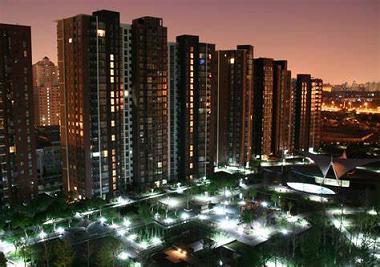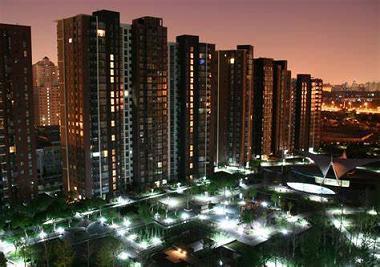
BEIJING, Dec. 17 (Xinhua) -- "Gray rhinos" have become the most hunted species in China -- not on the prairies but in the financial sphere.
Slow, heavy and easy to neglect, rhinos can suddenly charge flat out, delivering a fatal attack - as can financial risk across the country.
The term became popular after a 2016 book by U.S. policy analyst Michele Wucker used it to depict a highly probable, high impact financial threat that was often widely ignored.
The People's Daily, the Communist Party of China flagship newspaper, picked up the metaphor in July to warn of financial risks, triggering widespread discussion.
In the past year, authorities have made notable progress in its bid to bring to heel some of the major "gray rhinos," generally shadow banks that pose significant threat to the economy.
Global ratings agency Moody's this month predicted a stable outlook for Chinese financial institutions through 2018, citing strengthening regulations and steady economic growth.
"China's leaders have made financial stability one of their top priorities. Given the size and importance of the Chinese market, with the world's largest banks and second-largest stock market, that is welcome news for China and the world," said Ratna Sahay and James P. Walsh, two senior officials at the International Monetary Fund, in a blog post last week.
SHADOW BANKING
For years, banks seeking higher profits, depositors lacking decent investment returns and companies having difficulties in securing bank loans have combined to drive the fast growth of shadow banking, which takes place outside regulatory scope, causing risks to financial stability.
To curb shadow banking growth, authorities have tightened their grip on interbank activities and off-balance-sheet wealth management products. The country's 100 trillion-yuan asset management business will also be put under stricter scrutiny.
Amid the clampdown, China's total shadow banking assets barely grew during the first six months of 2017 and declined as a percentage of GDP for the first time since 2012, Moody's said in a report last month.
Both interbank assets and liabilities, major indicators for shadow-banking activities, dropped in the first 10 months, while WMP growth slowed sharply from a year earlier, according to the China Banking Regulatory Commission.
"The government will remain keen on adopting coordinated policy measures to curb shadow banking and interbank activities and to address key imbalances in the financial system," said Sherry Zhang, a Moody's analyst.
REAL ESTATE BUBBLES
After soaring property prices made housing affordability and risks of real estate bubbles a growing concern, authorities have reiterated that "housing is for living in, not for speculation."
Since last year, dozens of local governments have passed or expanded restrictions on house purchases and increased minimum downpayments. Property developers, real estate agencies as well as Internet finance and micro-loan companies were prohibited from offering illicit downpayment financing for buyers.
The effort has paid off. Home-buying fever has cooled in hotspot cities, with both new and second-hand home prices in first-tier cities posting slower year-on-year growth for the 13th consecutive month in October.
Leverage in the real estate sector was reduced. In the first three quarters, medium- and long-term loans to residents, mainly individual property mortgage loans, accounted for 37.6 percent of all new loans, down from 45 percent last year, according to the central bank.
LOCAL GOVERNMENT DEBT
China's local government debt soared during an investment and construction binge following the global financial crisis in 2008. Well aware of the risks, authorities have taken an array of measures to reduce the local debt burden.
Debt ceilings have been set for local governments, a debt-for-bond swap program has been piloted to exchange higher-cost loans with lower-cost bonds, while steps were taken to move some local government fiscal liabilitiess to higher authorities.
This year, authorities tightened regulation on "backdoor" borrowing such as financing through fake public-private partnerships. The "front door" was also opened, with local governments allowed to issue land reserve bonds and toll road bonds to increase their funding capabilities through standardized transparent channels.
Outstanding local government debt stood at 15.86 trillion yuan (about 2.4 trillion U.S. dollars) as of June 30, slightly higher than 15.32 trillion yuan at the end of 2016 but below this year's government-targeted ceiling of 18.82 trillion yuan.
In an analysis earlier this month, Moody's said the economic and fiscal performance of Chinese local governments was stable in the first three quarters of 2017, expecting full-year targets to be met.
SOE LEVERAGE
Poor corporate governance, overcapacity and easy credit supply have pushed debt in China's state-owned enterprises (SOEs) to an alarming level in the past few years. Reducing SOE leverage was given high priority at the National Financial Work Conference, a five-yearly tone-setting meeting, in July.
More centrally-administered SOEs were merged and restructured this year, a mixed-ownership reform scheme was expanded steadily to introduce private capital, while debt-to-equity swaps were accelerated, allowing companies with long-term potential to exchange their debt for stocks.
These moves improved corporate governance and efficiency, with SOE profits posting double-digit growth so far this year. By the end of September, the average debt ratio of central SOEs fell 0.2 percentage points from the beginning of the year.
However, more still needs to be done. Li Yang, chairman of the National Institution for Finance and Development and a renowned economist, estimated that the SOE deleveraging process would likely take three to five years.
"The key of SOE deleveraging is the disposal of 'zombie firms,'" he said.




 A single purchase
A single purchase









